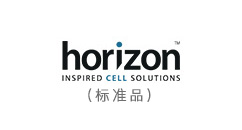



Next generation sequencing (NGS) platforms give researchers much greater power when profiling the complex human genome. However, the use of NGS presents challenges surrounding sample variability, platform bias, and potential failure to detect biomarkers. Horizon’s standards are appropriate for any NGS library preparation including whole-genome, whole-exome, custom capture and targeted amplicon panels. Horizon has developed this NGS Reference Standard range to support the development and continued validation of Next Generation Sequencing platforms. The Structural Multiplex Reference Standard covers a wide range of mutations in defined genomic context. This standard is designed to challenge your molecular and bioinformatic work flow by providing validated copy number variants/amplifications, translocations, and large insertions/deletions. Additionally, you may examine the genomic context of variants within regions of specific GC-content (high vs. low). The Structural Multiplex includes 9 ddPCR-validated mutations, with most of them centered at 5% allelic frequency. Highlight features of the Structural Multiplex include RET and ROS1 fusion variants, MYC-N and MET focal amplifications, and a BRCA2 variant. The Structural Multiplex is also available in cfDNA (HD786) and FFPE (HD789) format.
With this product you are able to:
- Evaluate the effect of genomic context on variant detection
- Analyze the robustness of your bioinformatics pipeline
- Optimize and validate new cancer panels and routinely monitor the performance of your assay
Technical Data
Format: Genomic DNA
Genes Covered: GNA11, AKT1, EGFR,PIK3CA , MET, MYC-N, RET, ROS1
Allelic Frequencies: 4.8-5.6% and 4.5 & 9.5 x amplification for the CNV
Buffer: Tris-EDTA (10mM Tris-HCl, 1mM EDTA), pH 8.0
Product Information
Verified Mutations
The Structural Multiplex Reference Standard has been manufactured using multiple engineered cell lines and mixed to generate multiple Allelic Frequencies in multiplex. An example of the allelic frequency by whole-exome sequencing for one batch of this product is reported in the table below.
| Gene | Variant (AA) | CDS mutation | GRCh38 co-ordinates | Expected allelic frequency (%) | NGS allelic frequency (%) | NGS read depth |
|---|---|---|---|---|---|---|
| GNA11 | Q209L | c.626A>T | 19:3118944 | 5.60% | 3.04% | 362 |
| AKT1 | E17K | c.49G>A | 14:104780214 | 5.00% | 4.26% | 329 |
| PIK3CA | E545K | c.1633G>A | 3:179218303 | 5.60% | 4.46% | 1122 |
| EGFR | A767_V769dup | c.2300_2308dup | 7:55181317 | 5.60% | 3.87% | 1369 |
| EGFR | ΔE746 - A750 | c.2235_2249del | 7:55174771 | 5.30% | 4.60% | 543 |
| ROS1 | SLC34A2/ROS1 fusion | N/A | N/A | 5.60% | b | b |
| RET | CCDC6/RET fusion | N/A | N/A | 5.00% | b | b |
| MET | amplification | N/A | N/A | 4.5 copies | b | b |
| MYC-N | amplification | N/A | N/A | 9.5 copies | b | b |
b – Variant type not called by variant caller (large insertion, CN variant, fusion, indel)
Unit Size: 1 µg
Concentration: 50 ng/µl
Exome sequencing data: Download additional information on all exonic variants present in this product. Please note: this NGS data is not batch specific.
General Information
Storage: 4˚C
Expiration: See all product shelf life information
Quality Control
Allelic Frequency: Droplet Digital PCR™
Genotype: Sanger sequencing of locus specific PCR
Quality: Agarose gel electrophoresis
Quantification: Spectrophotometry (A260)
Intended use: For assay developers and molecular diagnostic labs for routine performance monitoring of molecular biology assays. Research use only. Not for diagnostic procedures.








 用小程序,查商品更便捷
用小程序,查商品更便捷







 危险品化学品经营许可证(不带存储) 许可证编号:沪(杨)应急管危经许[2022]202944(QY)
危险品化学品经营许可证(不带存储) 许可证编号:沪(杨)应急管危经许[2022]202944(QY)  营业执照(三证合一)
营业执照(三证合一)